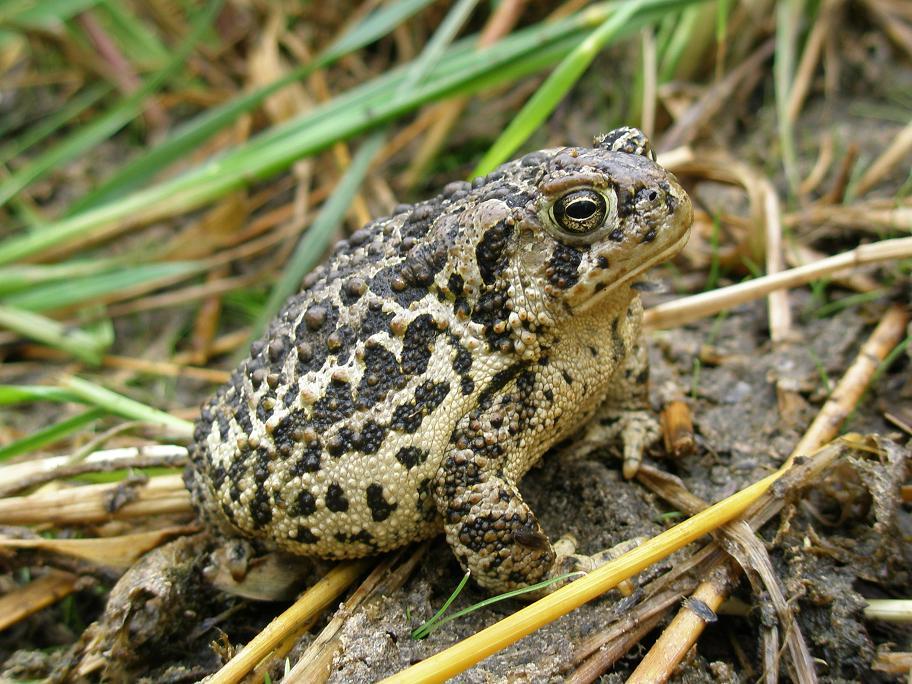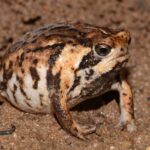- Anaxyrus baxteri: The Wyoming Toad's Struggle for Survival and Conservation Hope
- Taxonomy and Classification
- Natural Habitat: Wyoming's Treasured Wetlands
- Physical Characteristics: Nature's Camouflage Expert
- Behavior and Life Cycle: Secrets of the Wyoming Toad
- Ecological Role: Keystone Amphibians in Delicate Equilibria
- Threats and Conservation Status: Battling for Survival
- Cultural and Scientific Significance: A Symbol of Restoration and Resilience
- Conclusion: Guardians of a Fragile Future
Anaxyrus baxteri: The Wyoming Toad’s Struggle for Survival and Conservation Hope#
The wind whispers softly among swaying grasses that lead down to tranquil wetlands, hidden like jewels within Wyoming’s Laramie Basin. It is here, amidst the cattails and sedges bathed by evening twilight, where an amphibian of quiet charm and enormous significance can be found—Anaxyrus baxteri, more commonly known as the Wyoming Toad.
Once abundant and familiar to the region, the Wyoming Toad has faced dramatic declines, now standing precariously on the edge of extinction. Yet beneath its delicate, patterned skin lies a tale of ecological significance, resilience, and passionate efforts by human hands striving valiantly to keep its tiny heart beating.
Taxonomy and Classification#
Anaxyrus baxteri belongs to the Bufonidae family, the true toads, a diverse and widespread group recognizable by their sturdy bodies, wart-covered skin, and distinctive vocalizations. The genus Anaxyrus was separated from the previously broad genus Bufo, allowing for greater taxonomic clarity.
The Wyoming Toad, Anaxyrus baxteri, was first identified scientifically in 1946 by George Baxter, whose name was fittingly lent to the species. Its closest relatives within this genus are similarly structured toads adapted to distinct ecosystems across North America, including the Great Plains Toad (Anaxyrus cognatus) and the American Toad (Anaxyrus americanus).
Natural Habitat: Wyoming’s Treasured Wetlands#
The range of the Wyoming Toad was historically concentrated exclusively within the Laramie Basin in southeastern Wyoming. Once common among floodplains, marshes, and shallow wetland environments nestled within the Big and Little Laramie rivers, the species thrived in cool, freshwater habitats, nourished by ample rainfall and snowmelt.
These wetlands act as an ecological sanctuary—marshy pools fringed by thick reeds and bulrushes providing shelter, food, and a crucial breeding ground. The damp earth, dense vegetation, and seasonal fluctuations perfectly suit the Wyoming Toad’s life cycle, offering conditions ideal for egg-laying, tadpole growth, and adult survival.
In quiet evenings amidst these wetlands, the haunting yet rhythmic trill of male Wyoming Toads would echo softly, punctuating summer nights and signaling the secretive rituals of courtship and species continuity.
Physical Characteristics: Nature’s Camouflage Expert#
Upon first glance, the Wyoming Toad might seem humble and unassuming, yet close inspection reveals its delicate beauty and adapted mastery. Adults typically measure around 5 to 7 centimeters long, each boasting a rounded, compact silhouette characteristic of true toads.
Their coloration ranges from olive-brown to grayish-green, interspersed elegantly with darker blotches bordered subtly by pale lines. Their skin texture, rough and warty yet fascinatingly intricate, further enhances their natural camouflage, offering indispensable cryptic protection from predators such as herons, raccoons, and snakes.
An additional defense exists beneath their modest appearance—a network of parotoid glands positioned just behind their eyes. These glands secrete mild toxins, deterrents against would-be predators attempting to swallow them whole. This subtle yet impeccable design showcases nature’s evolutionary ingenuity, ensuring survival in Wyoming’s ecosystem.
Behavior and Life Cycle: Secrets of the Wyoming Toad#
Diet and Hunting Strategies#
An insectivorous species, Wyoming Toads rely primarily on a wide array of insects, spiders, and small invertebrates—playing a crucial role in managing pest populations. Employing an ambush strategy, the toad patiently awaits prey near water edges or beneath protective vegetation, swiftly projecting their sticky tongue in precise strikes the moment prey ventures close enough within range.
Breeding Rituals Amidst Wetland Waters#
Breeding season typically occurs in late spring through early summer, sparked by warming temperatures and increased rainfall. Male Wyoming Toads gather in shallow pools, filling the air with mesmerizing, melodic calls aimed at enticing females. Following courtship, the female lays gelatinous strings of eggs—sometimes numbering over a thousand—that quickly evolve into tadpoles.
For weeks, these tadpoles inhabit quiet pools, feeding voraciously on algae and microorganisms. Then, through remarkable transformation, they slowly develop limbs, reabsorb their tails, and finally venture onto land as miniature replicas of their adult counterparts, eager to explore and inhabit the basin’s diverse habitats.
Ecological Role: Keystone Amphibians in Delicate Equilibria#
Despite its modest size, the Wyoming Toad holds a pivotal position within Wyoming’s wetland ecosystems. As both predator and prey, it actively aids population control of insects such as mosquitoes and flies, thereby supporting healthy vegetative growth and limiting disease vectors of concern to humans.
Furthermore, amphibians worldwide serve as valuable bioindicators. Changes in amphibian populations often reflect broader environmental shifts and the presence of pollutants, meaning a healthy Wyoming Toad population directly translates into a well-balanced, thriving wetland environment.
Threats and Conservation Status: Battling for Survival#
Tragically, the Wyoming Toad has suffered devastating declines from formerly abundant populations.
The Causes of Decline#
Loss, fragmentation, and deterioration of suitable wetland habitat due to agriculture, alteration of natural water regimes, and increased development have significantly contributed to their downfall. Drought conditions resulting from climate change intensify these existing threats, further weakening the Wyoming Toad’s resilience.
Yet perhaps the greatest recent danger lies unseen: chytridiomycosis, a devastating fungal disease responsible for countless amphibian species declines worldwide. Its arrival to the Laramie Basin dealt a near-fatal blow to the already declining Wyoming Toad.
Current Conservation Actions#
Listed as Endangered under the U.S. Endangered Species Act and categorized as ‘Extinct in the Wild’ by the IUCN Red List, the Wyoming Toad now survives primarily through dedicated and carefully managed captive breeding programs.
Conservationists and scientists are tirelessly breeding and rearing toads, regularly releasing monitored individuals back into thoughtfully restored habitats in the Laramie Basin. Wetland restoration projects, environmental education, and local involvement are central strategies emphasized in ongoing recovery efforts to achieve sustainable, wild populations once more.
Cultural and Scientific Significance: A Symbol of Restoration and Resilience#
Though small and secluded in its natural habits, the Wyoming Toad has become a symbol of nature’s fragility and human obligation toward stewardship. The species provides a living case study in conservation biology about global amphibian declines, resilience in natural restoration, and the crucial necessity of cross-sector collaboration.
Many local communities now recognize the toad as a charismatic regional icon, harnessing it as an educational emblem promoting environmental conservation, sustainable agriculture, and citizen science-driven monitoring efforts.
Conclusion: Guardians of a Fragile Future#
Standing beneath moonlit skies, surrounded by wetland chorus, we are reminded of our intimate connection with species like the Wyoming Toad. Its fight for survival equally reminds us how we, too, depend on wetlands’ vitality and biodiversity.
By remaining informed, engaged, and actively supporting wetlands conservation, citizen scientists and nature enthusiasts alike become agents of positive change. Each effort, big or small, can help safeguard a future where the gentle ribbits of Wyoming Toads once again serenade twilight waters, underscoring the resilience of both nature and humanity.
Let the humble Wyoming Toad serve as testament and inspiration—our collective efforts do and will make a lasting difference.















